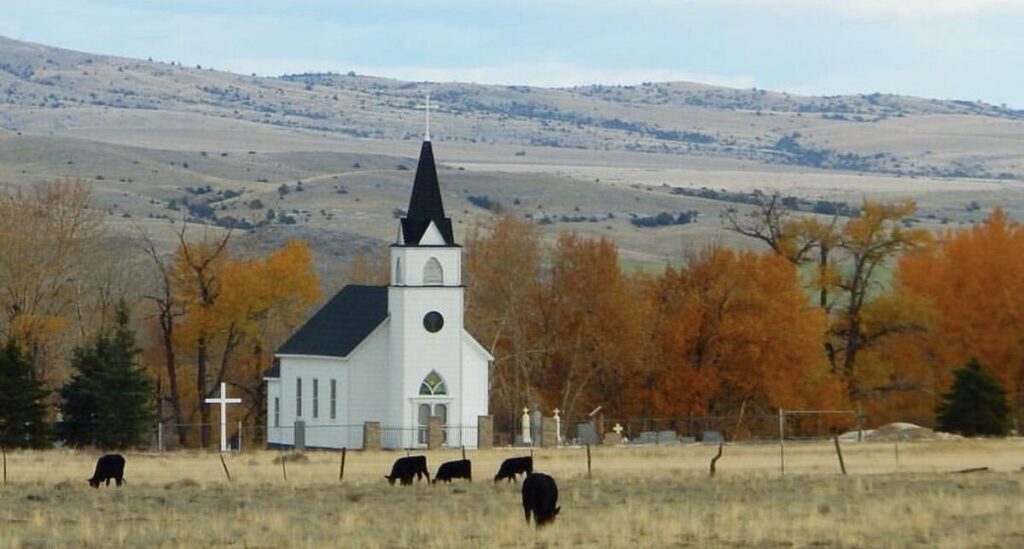[The American Conservative] If you’ve ever been to a Donald Trump rally, you’ll notice it doesn’t match the impression left by the media coverage of the president’s base.
Anger, for instance, isn’t the prevailing mood.
Hopefulness is more characteristic. But there’s more. There’s something about these rallies that goes beyond politics, and his harshest critics have found it fearful. “Trump has harnessed the kind of emotional intensity from his base that is more typical of a religious revival meeting than a political rally,” liberal religion scholar Reza Aslan wrote, “complete with ritualized communal chants.”
This isn’t unprecedented. At Barack Obama’s 2008 rallies, fans fainted, and those blessed with an Obama handshake pondered never washing that hand again. Obama was more than a politician. He was nearly a religious figure for his base. Something similar is going on with Trump.
And herein lies the best, deepest explanation of “how we got Trump.” Trump’s improbable likeness to a mega-church preacher allowed him to capture the love of a huge swath of the electorate that previously tuned out or voted for Democrats. The people who came to Trump, especially early in the primaries, weren’t really joining the GOP and they weren’t primarily seeking policies. They didn’t even necessarily believe Trump would bring back their jobs. Many of Trump’s earliest and most dedicated supporters were seeking a deeper fulfillment.
They came to Trump seeking what they had lost because they had lost church.
When Trump caught so many political commentators off guard, we looked for an explanation amid the closing factories, but we should have been looking for the closing churches.
And this is a story much bigger than Trump. Trump’s early appeal was his declaration that “the American Dream is dead,” as he put it in his campaign launch. Faith in the American Dream is the weakest where people lack strong religious institutions where they can seek deeper meaning.
The best way to describe Trump’s support in the Republican primaries—when he was running against the likes of Jeb Bush, Ted Cruz, Marco Rubio, John Kasich—would be: white evangelicals who do not go to church.
Geoffrey Layman, a political science professor at the University of Notre Dame, noticed this during the primaries, writing: “Trump does best among evangelicals with one key trait: They don’t really go to church.”
While writing my forthcoming book,Alienated America, my research assistant Nick Saffran and I crunched some numbers provided by Emily Ekins of the Voter Study Group. We broke down Republican primary voters by church attendance. Among the most frequent attenders—those going more than once a week—Trump got about 32 percent of the vote.
Trump also got a minority of those who simply go once a week. Among those who reported going “a few times a year,” Trump got about half. He got an easy majority (55 percent) of those Republicans who “seldom” attend, and a full 62 percent of those who never attend. That is, every step down in church attendance brought a step up in Trump support, and vice versa. The most frequent attenders were half as likely to support Trump as were the least frequent attenders.
This confirmed what others had noticed. Liberal Peter Beinart wrote for The Atlantic that the GOP electorate has secularized, and that this secularization “helped Trump win the GOP nomination.”
In March, as the GOP field was narrowing down to Trump and Cruz, one Pew Research Center survey found Trump trailing by 16 points among white evangelical voters who attended church weekly, but leading by 19 points among those who do not.
The nuances of this picture shouldn’t be blurred over. It would be wrong to say that Trump’s base was less religious. Ekins, the pollster, divided the GOP electorate into clusters, defined by various traits. There were “Free-Marketeers” and “Staunch Conservatives,” for instance. There was one cluster defined by being non-ideological and being pessimistic about the future. Ekins labeled them the “Preservationists.” This was Trump’s strongest cluster in the GOP primaries, by far.
The Preservationists, Ekins found, were the most likely to say religion was very important to them. They were also the least likely to attend religious services.
This gave an easy and satisfying explanation during the primaries to Christian conservatives put off by Trump and his base: Oh, these are hypocrites, not real Christians.
That dismissive explanation misses the point. We shouldn’t see this as a story of working-class whites slacking off and turning away from God, as much as one of working-class whites finding themselves in places where institutions of civil society—most importantly the church—are drying up.
[Editor’s Note: This article was written by Timothy P. Carney and originally published at The American Conservative. Title changed by P&P.]











